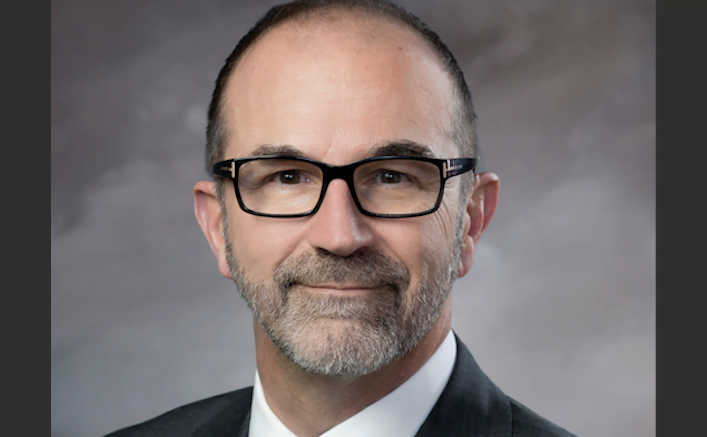Editor’s Note:
Bob Sartor of the Calgary Airport Authority was featured in the Director’s Chair column in the March issue of Airport Experience News. Below is an excerpt of that interview.
Calgary International Airport (YYC) has historically relied heavily on business travelers accessing the nearby oil and gas industry, but stagnation of that business translated into stagnation in passenger traffic growth. In recent years, the airport’s focus has shifted a bit as it positions itself as a connecting hub for western Canada.
Bob Sartor took the helm at the Calgary Airport Authority in January 2017. The former brewery executive, who came with no previous aviation experience, is shaking up the way YYC is positioned in the market, and is attempting to evolve the customer experience at the same time. AXN’s Carol Ward spoke with Sartor about the progress he’s made and his vision for the airport’s future.
WARD: You’ve been at YYC for about two years. Can you give me an overview on your key goals and your progress in achieving them?
SARTOR: I really wanted to reorient our culture to become far more focused on guest hospitality. We had a mindset here at the airport that we were effectively in the large infrastructure business, which obviously airports are. But I felt that infrastructure is one of the means by which we curate hospitality to the 17.4 million guests that come through our home every year. I wanted to reorient the organization, make it far more customer-centric and far more focused on driving value to our airline partners. Also, we needed to start growing again. We had just built a big international terminal. Alberta’s economy is driven in large part by oil and gas revenues, and that business has been tough for a few years now. Growth was quite anemic in our airport for the past several years.
WARD: Growth has picked up recently, correct?
SARTOR: Yes, we’ll grow by about 7 percent [in 2018], adding about 1 million passengers. We’re forecasting another 1 million passengers [for 2019]. And the good news is a lot of that growth is in trans-border, Canada-U.S. flights and in international flights, so we’re filling our international terminal.
WARD: What’s driving the international growth?
SARTOR: We had historically been the lowest cost per passenger major airport in Canada. With our new runway and our new terminal, that changed, and we became one of the highest cost. We needed to get back down in cost. In two years we’ve gone from the second highest cost to the second lowest cost. We’ve also worked with our two major carriers – WestJet and Air Canada – to try to make this the best connecting airport for them in Canada. We’re about 36 percent connecting this year [2018] and we fully expect to hit above 40 percent connecting over the next few years. We have all sorts of projects in place with our carriers to ensure that we continue to be an easy airport to do business in, both from a cost perspective and from an efficiency perspective.
WARD: Can you expand on what you mean by a more customer-centric approach?
SARTOR: During most of 2017, we worked on a new strategic direction for the airport. It was focused on four key planks. One was developing our people, really developing their capacity to do more and empowering them so we could be more nimble as an airport organization. The second was driving customer satisfaction. The third was making it easy for airlines to operate here, so being cheap, efficient and effective. The fourth was continuing to drive down our dependence on aeronautical revenues and really driving our non-aeronautical revenues.
On the customer side, the first thing we researched was what people liked and didn’t like about our airport. Then we journey-mapped. We looked at every significant customer journey, every kind of connection, every kind of retail and food and beverage that we had, and how all those came together for guests traveling through our airport. Then we developed a fairly robust plan that highlighted our amazing city and the surrounding area – we live in a beautiful part of the world with the Rocky Mountains and the prairies joining – and started bringing that into the airport so the people who are connecting begin to realize what a special and unique place southern Alberta and in particular Calgary is. We also did a complete review of all of our food and beverage, all of our retail and all of our services. In 2019 through 2021 we will basically be upgrading 100 percent of our offerings. In fact, in 2019 alone we have 19 new concepts coming in.
We are the youngest major city in Canada. This is where people come to start a new life. There’s lots of entrepreneurialism here, and certainly lots of innovation. Our airport needs to be a reflection of the city that it serves. I’ve really planted the flag with digitization and digital experiences, rather than a big sculpture that’s going to collect dust for the next 20 years. We’ve worked with our partners – such as Travel Alberta, Tourism Calgary, Calgary Stampede – in driving experiences for travelers. We decided to bring some of their content in. We’ve got the eyeballs and they’ve got the content. We can tell some amazing stories about Calgary and the surrounding area, about our heritage and about all the neat things there are to see and do in Southern Alberta. We’ll find corporate sponsors to sponsor those experiences. Our sense of place will be very much experiential.






